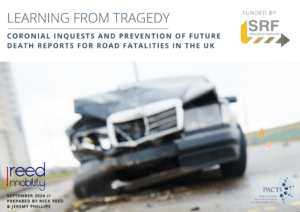Future generations of self-driving cars should ‘learn the language’ of cyclists to help them safely share the roads with bikes, new research suggests.
Human-computer interaction specialists from the University of Glasgow have highlighted the need for new systems in autonomous vehicles (AVs) capable of replicating the complex social interactions between human car drivers and cyclists on UK roads, according to a report in the Herald Scotland.
Researchers studied the many ways drivers and cyclists directly and indirectly communicate with each other in real-life situations on the road.
Their findings form the basis of a new series of recommendations on how AVs should behave safely around cyclists in the decades to come, where drivers will be less actively engaged in their journeys.
For AVs to work safely in human traffic, they must behave appropriately and understand human communications.
Self-driving cars could better signal their intentions with displays integrated onto their exteriors, the team suggest.
A series of traffic-light-like coloured LEDs on the cars’ edges could to display animations which signal their intentions to manoeuvre, slow or speed up, or give way, helping cyclists to better interpret the AVs’ intentions and respond appropriately.
Cyclists could also wear new types of ‘smart glasses’ which display information on AVs’ intentions by allowing the cars to communicate directly with any cyclists around them.
AVs could signal that the right of way is up for negotiation, for example, with orange lights displayed on the vehicle and a vibration sent to the cyclists’ glasses as a non-verbal message, said the Herald report.
Professor Stephen Brewster, of the University of Glasgow’s School of Computing Science, led the research. He said: “Cars and bikes share the same spaces on the roads, which can be dangerous – between 2015 and 2020, 84% of fatal bike accidents involved a motor vehicle, and there were more than 11,000 collisions.
“There has been a lot of research in recent years on building safety features into autonomous vehicles to help keep pedestrians safe, but comparatively little on how AVs can safely share the road with cyclists.
“That’s a cause for concern as AVs become more commonplace on the roads. While pedestrians tend to meet AVs in highly controlled situations like road crossings, cyclists ride alongside cars for prolonged periods and rely on two-way interactions with drivers to determine each other’s intentions.
He added: “It’s a much more complicated set of behaviours, which makes it a big challenge for future generations of AVs to tackle.
“Currently, self-driving cars currently offer very little direct feedback to cyclists to help them make critically important decisions like whether it’s safe to overtake or to switch lanes. Adding any guesswork to the delicate negotiations between car and bike has the potential to make the roads less safe.”
Ammar Al-Taie, also of the University of Glasgow’s School of Computing Science, is a co-author of the paper. He said: “Just like spoken languages, communication between cyclists and drivers varies from country to country. We’re very conscious that this paper focuses specifically on UK roads – any future developments will need to take into account the differences in drivers’ and cyclists’ interactions across the world.
“However, we hope that this research will be a valuable resource for AV designers to consider new ways that self-driving cars can work safely alongside cyclists by speaking their language, wherever they may be.”
The paper, titled ‘Keep it Real: Investigating Driver-Cyclist Interaction in Real-World Traffic’, will be published in Proceedings of the 2023 CHI Conference on Human Factors in Computing Systems.
The research was supported by funding from the University of Glasgow and the Royal Society of Edinburgh.



























